– By Merlin Pattath

The formation of QUAD is the perfect example of the theory of balance of power. The Quadrilateral Security Dialogue is a group of four countries: the United States, Australia, India, and Japan that promotes maritime cooperation among them to keep China at bay.
Quad first came into existence after the 2004 tsunami and saw some formalization in 2007. At that time Australia had issues, with the grouping again meeting a decade later in 2017 at the official level. At the Raisina Dialogue in New Delhi, Japan Self-Defense Forces Chief of Staff, Joint Staff, Admiral Katsutoshi Kawano, warned of China’s “powerful and expanding” military power and called upon India, the United States, Australia, and Japan to cooperate with one another to “deter Chinese provocations.” The naval chiefs of the four nations constituting the Quad—the United States, Japan, Australia, and India—convened at Raisina to discuss the search for order in the Indo-Pacific region. The first official meeting of this quadrilateral grouping took place in Manila in November 2017 on the sidelines of the Association of Southeast Asian Nations (ASEAN) and East Asia Summits. Given China’s recent assertiveness on regional security issues, the Quad has the potential to become an effective balancing mechanism to counter China in Asia.
The future of “Quad” has tremendous significance, not just in the Indo-Pacific, but everywhere. Decision-makers, risk managers, investors, CEOs, and regular citizens increasingly are aware of rising stakes in a new, global balance of power.
Implications in 2021
The Quadrilateral Security Dialogue (Quad) Summit held on March 12, 2021, did not name China directly, but Beijing seemed anxious and rattled about the event, as its mouthpiece Global Times speculated US, Japan, India, and Australia to be hyping the “China threat” even before the event. Chinese response of calling Quad meeting as ‘selective multilateralism’ and ‘covid politics’ shows its frustration due to the emergence of an alternate global vaccination collaboration, something which China had unilaterally reserved for itself for profiteering. Quad’s assertion to support the rule of law, freedom of navigation, overflight, democratic values, and territorial integrity has added to the frustration of Beijing, which has started firing a salvo of propaganda through its mouthpiece Global Times, calling India (the only Non-NATO partner) as “Negative Asset for BRICS and SCO(Shanghai Cooperation Organisation)” failing to understand Chinese goodwill. With the series of foundational agreements like COMCASA(Communications Compatibility and Security Agreement), BECA(Basic Exchange and Cooperation Agreement for Geo-Spatial Cooperation) signed between US and India, and naval exercises, the operability of India with other Quad members, operating within NATO (North Atlantic Treaty Organization) military alliance framework, has improved.
India is the only country amongst Quad members which has an unsettled land border with China. China has done its best to create some apprehension in the minds of the other Quad members, by keeping China -India relations fluctuating between tension and harmony with incidents like Doklam, Wuhan, and Ladakh. After the Doklam and Ladakh standoffs, it’s quite clear to Indians that China can’t be trusted, which has brought relatively better clarity in the Indian position. The economic entanglement of each of the Quad members with China necessitates a resilient supply chain, digital and technological ecosystem, with minimal dependence on China.
There has been consensus regarding support for ASEAN’s centrality as well as the outlook on the Indo-Pacific, but their inclusion into it will be a debatable issue, due to Chinese influence over them. Generally, some of the affected ASEAN countries have occasionally raised a feeble voice against Chinese aggression (Philippines, Vietnam), expecting world powers to check Chinese adventurism, as they find it difficult to stand up against the Chinese might by themselves. This has emboldened China to continue incremental encroachment in SCS(South China Sea) and the region. China has always tried to deal with every country on bilateral terms, using its Comprehensive National Power (CNP) to its advantage. In forthcoming bilateral engagements with US, Japan and India, it will continue to aim for weakening the Quad, by some bilateral concessions.
One of the biggest outcomes of the 2021 summit was, COVID-19 vaccines will be manufactured in India, financed by the US and Japan with logistical support from Australia. The intention of Quad to synergise medical, scientific, financing, manufacturing, critical emerging-technology and developmental capabilities in future, is a step in right direction. Sharing of innovative technology and capacity building for climatic challenges will serve the interest of humanity. These statements have hyped good optics, but if sincerely implemented will certainly make Quad an effective grouping.
Quad members must continue freedom of navigation exercises and military posturing in the Indo-Pacific, as China continues to do so. If the strategic situation worsens there may be a need to position ‘UN Maritime Military Observers Group’, as prevention of accidental triggering of conflict is possible in a region having a high density of combat ships on FON(Freedom of navigation) missions.
The Summit did not signal expansion, but it needs to have the flexibility to incorporate like-minded democratic countries, as many would be keen to join Quad in future because the Indo-Pacific region is becoming the economic center of gravity and manufacturing hub of the world. Support of other navies like France, the UK, Germany, and other NATO members will be good deterrence to peace spoilers. Quad in its present form may not be structured to check Chinese adventurism, but it certainly has the potential to become one of the most effective instruments to do so. Chinese reactions indicate that it certainly has put China on notice, without even naming it.
2021 was the year for bite-sized multilateralism. In the midst of a torrid second wave, particularly in India, the Indian foreign policy had to adjust to a “new, new normal” in global geopolitics.
2022 Projections
Members of the Quadrilateral Security Dialogue (QUAD)–India, the US, Australia, and Japan– have largely agreed on the annual summit schedule which will happen rotationally between the four countries. Quad could be institutionalised which could turn it to a more powerful body.
India is willy-nilly drawn into the US-China great power competition, which has necessitated so many of India’s diplomatic moves in the past year and will continue to do so in 2022. The fact that China effectively tore up border agreements of 30 years means Beijing is playing a bigger game against India that could, if India is not vigilant and proactive enough, continue to tie it down at its borders, both on the Chinese and Pakistani fronts. This realization is enforced with foreign minister S Jaishankar and Defence minister Rajnath Singh’s frequent flagging of the continued Chinese threat. Both in 2020 and 2021, China engaged in the kind of usurious price gouging and supply destabilization that led India, Australia, and Japan to start a smaller grouping to build resilient supply chains. This initiative is likely to be absorbed into the larger Quad, but the idea remains the same — trusted, small networks, shorter supply chains and investment and trade linked to these chains. Most of them keep China out or in areas where it can be easily replaced.
India has been looking west with greater interest in the past few years. It has built close ties with the Arab Gulf and Israel while retaining its civilizational ties with Iran. Therefore, it seemed natural to build the second Quad in West Asia — Israel, India, UAE and the US came together to build digital and physical infrastructure, maritime security and technology. As a matter of fact, the only meaningful grouping that crumbled was a promising India-France-Australia trilateral that fell into the form of AUKUS, although it does help to beat China by pooling resources, integrating defence and industrial supply chains. However, 2022 may see India and France cooperating with the UAE as the definition of Indo-Pacific broadens to beyond the western Indian Ocean. The broad idea seems to be this: By putting a political/ strategic value to technology and infrastructure, these plurilateral arrangements are building alternatives to authoritarian China. Quad nations also plan to create infrastructure alternatives to Beijing’s Belt and Road Initiative. The Australian government has concluded the historic Reciprocal Access Agreement with Japan, which enables mutual military co-operation, and secured the elevation of the India relationship to a Comprehensive Strategic Partnership, with the possibility of an FTA by the end of 2022.
References :
https://www.legalserviceindia.com/article/l326-Balance-of-Power-in-International-Relations.html
https://www.rand.org/content/dam/rand/pubs/conf_proceedings/CF137/CF137.chap5.pdf
https://chanakyaforum.com/evolution-of-balance-of-power-in-international-relations/
https://southasianvoices.org/soft-balancing-asia/
https://www.financialexpress.com/defence/quad-summit-2021-why-is-china-rattled/2212544/

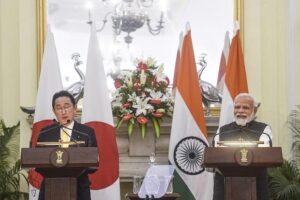


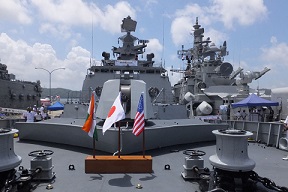
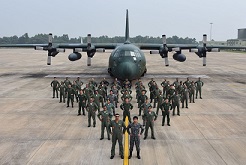



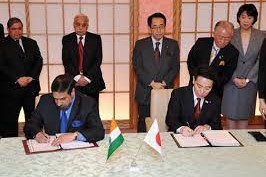

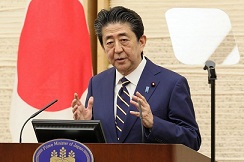
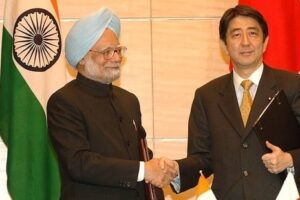

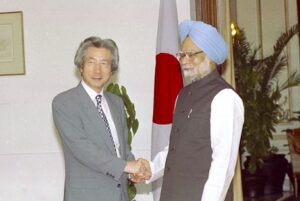
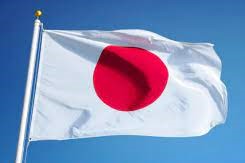
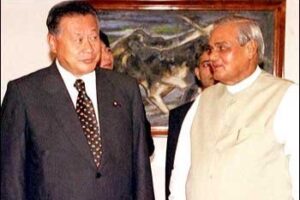
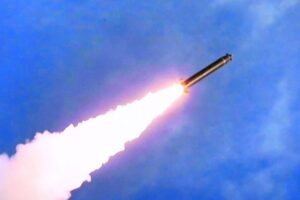




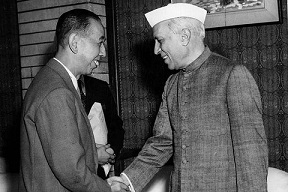



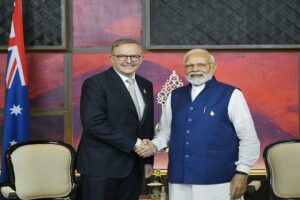



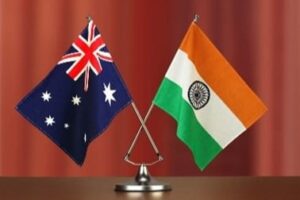
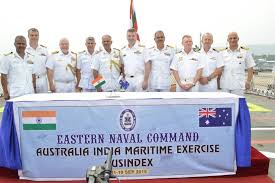

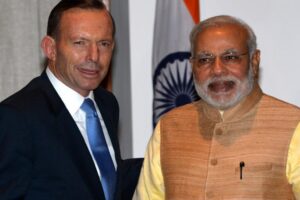





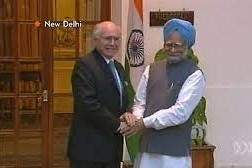
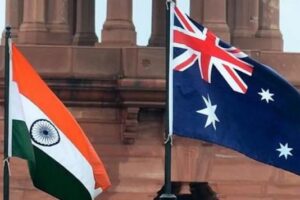


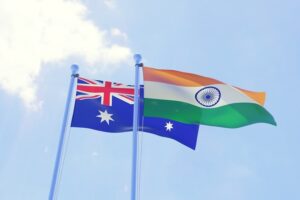

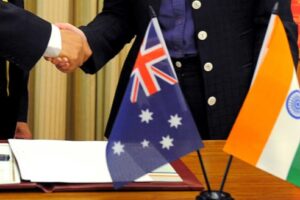

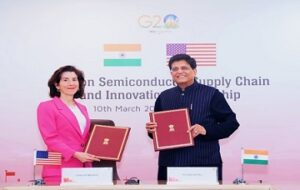
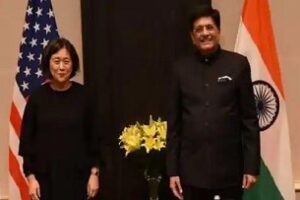
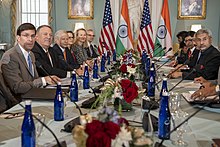

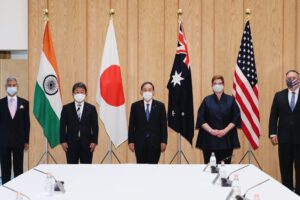

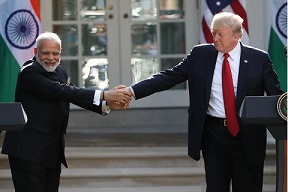
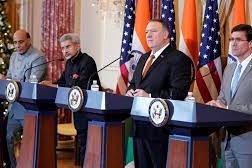
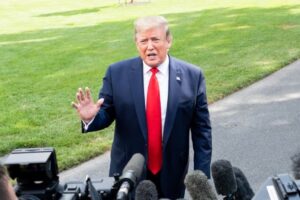
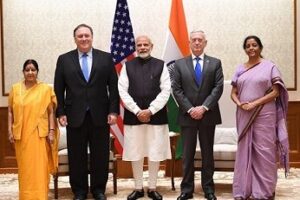
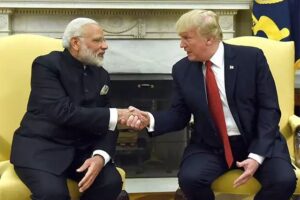
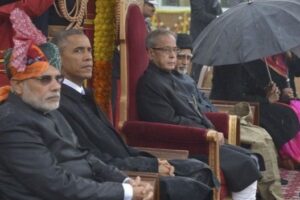

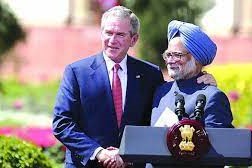
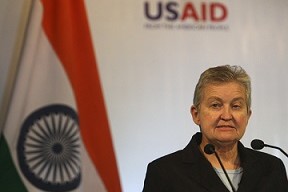
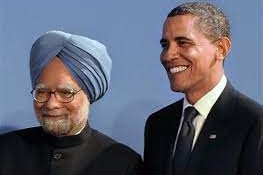
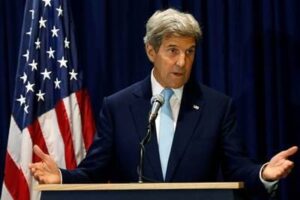

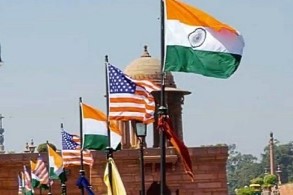
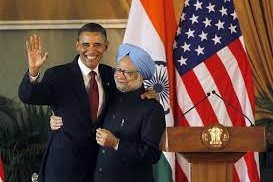
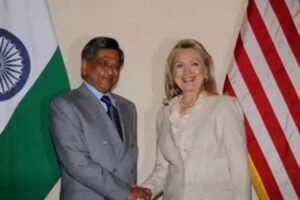

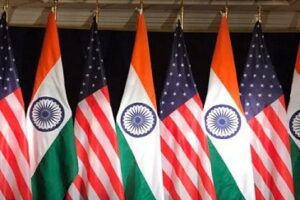
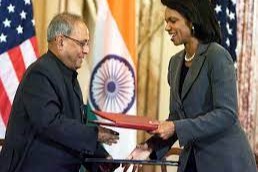

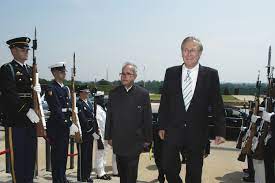


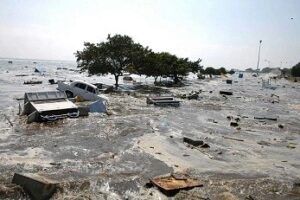

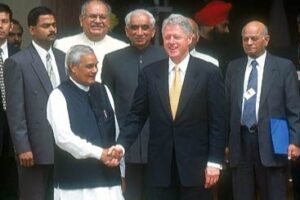
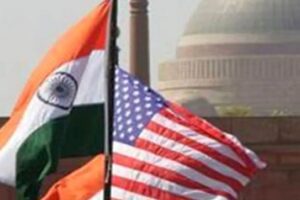

 onducted a total of five underground nuclear tests, breaking a 24-year self-imposed moratorium on nuclear testing. Pakistan followed, claiming 5 tests on May 28, 1998, and an additional test on May 30. The unannounced tests created a global storm of criticism, as well as a serious setback for decades of U.S. nuclear nonproliferation efforts in South Asia. On May 13, 1998, President Clinton imposed economic and military sanctions on India, mandated by Section 102 of the Arms Export Control Act (AECA), and applied the same sanctions to Pakistan on May 30. Some effects of the sanctions on India included: termination of $21 million in FY1998 economic development assistance; postponement of $1.7 billion in lending by the International Financial Institutions (IFI), as supported by the Group of Eight (G-8) leading industrial nations; prohibition on loans or credit from U.S. banks to the government of India; and termination of Foreign Military Sales under the Arms Export Control Act. Humanitarian assistance, food, or other agricultural commodities are excepted from sanctions under the law.
onducted a total of five underground nuclear tests, breaking a 24-year self-imposed moratorium on nuclear testing. Pakistan followed, claiming 5 tests on May 28, 1998, and an additional test on May 30. The unannounced tests created a global storm of criticism, as well as a serious setback for decades of U.S. nuclear nonproliferation efforts in South Asia. On May 13, 1998, President Clinton imposed economic and military sanctions on India, mandated by Section 102 of the Arms Export Control Act (AECA), and applied the same sanctions to Pakistan on May 30. Some effects of the sanctions on India included: termination of $21 million in FY1998 economic development assistance; postponement of $1.7 billion in lending by the International Financial Institutions (IFI), as supported by the Group of Eight (G-8) leading industrial nations; prohibition on loans or credit from U.S. banks to the government of India; and termination of Foreign Military Sales under the Arms Export Control Act. Humanitarian assistance, food, or other agricultural commodities are excepted from sanctions under the law. 
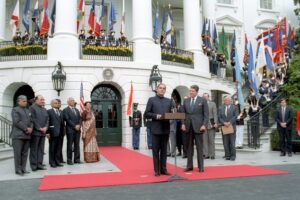



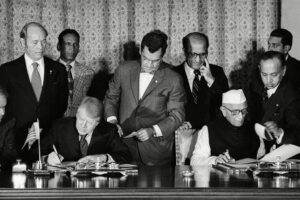
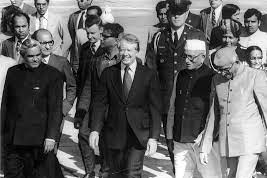

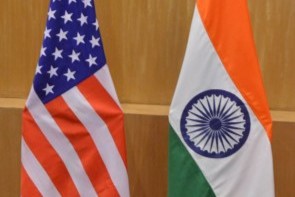







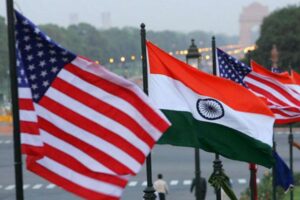
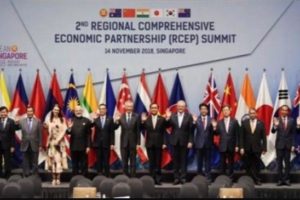 The first ministerial level meeting of QUAD was held on the sidelines of the United Nations General Assembly in New York. Before this, the QUAD had
The first ministerial level meeting of QUAD was held on the sidelines of the United Nations General Assembly in New York. Before this, the QUAD had AusIndEx is an exercise between India and Australia which was first held in 2015.The Australian
AusIndEx is an exercise between India and Australia which was first held in 2015.The Australian 



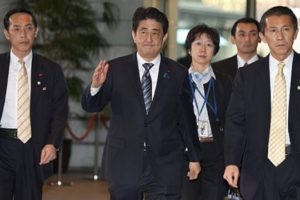



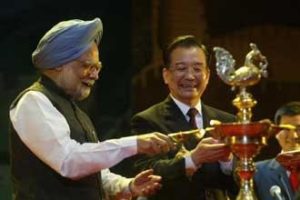 On recommendations of the Japanese government, the four countries met at Manila, Philippines for ASEAN Regional Forum (ARF) originally, but also ended up having a meeting of what we call the first meeting of four nation states on issues of
On recommendations of the Japanese government, the four countries met at Manila, Philippines for ASEAN Regional Forum (ARF) originally, but also ended up having a meeting of what we call the first meeting of four nation states on issues of 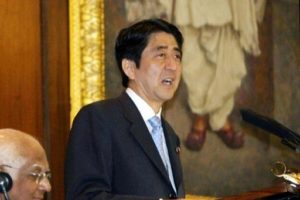 On his official visit to India, Japanese PM Mr. Shinzo Abe reinforced the ties of two nations, i.e., Japan and India with his famous speech about
On his official visit to India, Japanese PM Mr. Shinzo Abe reinforced the ties of two nations, i.e., Japan and India with his famous speech about  In 2007, Japanese President Shinzo Abe resigned from his post citing health reasons. This had a significant impact on QUAD as he was the architect & advocate of QUAD. His successor, Yasuo Fukuda, did not take up QUAD with such zeal leading to dormancy of the forum. (
In 2007, Japanese President Shinzo Abe resigned from his post citing health reasons. This had a significant impact on QUAD as he was the architect & advocate of QUAD. His successor, Yasuo Fukuda, did not take up QUAD with such zeal leading to dormancy of the forum. (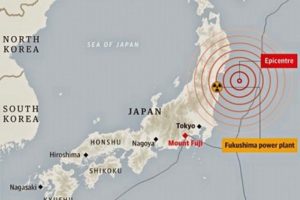 Japan earthquake and tsunami of 2011, also called Great Sendai Earthquake or Great Tōhoku Earthquake, was a 9.0 magnitude earthquake which struck below the floor of the Western Pacific at 2:49 PM. The powerful earthquake affected the northeastern coast of Honshu, Japan’s main island, and also initiated a series of large tsunami waves that devastated coastal areas of Japan, which also led to a major nuclear accident. Japan received aid from India, US, Australia as well as other countries. US Navy aircraft carrier was dispatched to the area and Australia sent search-and-rescue teams.
Japan earthquake and tsunami of 2011, also called Great Sendai Earthquake or Great Tōhoku Earthquake, was a 9.0 magnitude earthquake which struck below the floor of the Western Pacific at 2:49 PM. The powerful earthquake affected the northeastern coast of Honshu, Japan’s main island, and also initiated a series of large tsunami waves that devastated coastal areas of Japan, which also led to a major nuclear accident. Japan received aid from India, US, Australia as well as other countries. US Navy aircraft carrier was dispatched to the area and Australia sent search-and-rescue teams. 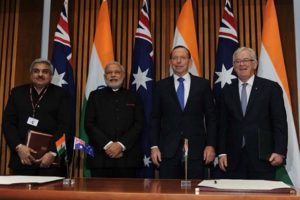 India and Australia signed the
India and Australia signed the  The India-Japan Agreement for Cooperation in the Peaceful Uses of Nuclear Energy was signed on 11 November, 2016 and came into force on 20 July, 2017 which was representative of strengthening ties between India and Japan. Diplomatic notes were exchanged between Dr. S. Jaishankar and H.E. Mr. Kenji Hiramatsu, Ambassador of Japan to India. (
The India-Japan Agreement for Cooperation in the Peaceful Uses of Nuclear Energy was signed on 11 November, 2016 and came into force on 20 July, 2017 which was representative of strengthening ties between India and Japan. Diplomatic notes were exchanged between Dr. S. Jaishankar and H.E. Mr. Kenji Hiramatsu, Ambassador of Japan to India. (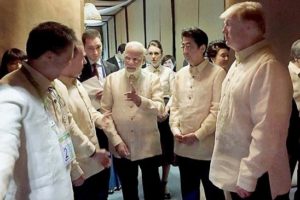 The foreign ministry
The foreign ministry The Officials of QUAD member countries met in Singapore on November 15, 2018 for consultation on regional & global issues of common interest. The main discussion revolved around connectivity, sustainable development, counter-terrorism, maritime and cyber security, with the view to promote peace, stability and prosperity in the
The Officials of QUAD member countries met in Singapore on November 15, 2018 for consultation on regional & global issues of common interest. The main discussion revolved around connectivity, sustainable development, counter-terrorism, maritime and cyber security, with the view to promote peace, stability and prosperity in the  The 23rd edition of trilateral Malabar maritime exercise between India, US and Japan took place on 26 September- 04 October, 2019 off the coast of Japan.
The 23rd edition of trilateral Malabar maritime exercise between India, US and Japan took place on 26 September- 04 October, 2019 off the coast of Japan.  After the first ministerial level meeting of QUAD in September, 2019, the senior officials of US, Japan, India and Australia again met for consultations in Bangkok on the margins of the East Asia Summit. Statements were issued separately by the four countries. Indian Ministry of External Affairs said “In statements issued separately by the four countries, MEA said, “proceeding from the strategic guidance of their Ministers, who met in New York City on the sidelines of the UN General Assembly recently, the officials exchanged views on ongoing and additional practical cooperation in the areas of connectivity and infrastructure development, and security matters, including counterterrorism, cyber and maritime security, with a view to promoting peace, security, stability, prosperity in the Indo-Pacific region.”
After the first ministerial level meeting of QUAD in September, 2019, the senior officials of US, Japan, India and Australia again met for consultations in Bangkok on the margins of the East Asia Summit. Statements were issued separately by the four countries. Indian Ministry of External Affairs said “In statements issued separately by the four countries, MEA said, “proceeding from the strategic guidance of their Ministers, who met in New York City on the sidelines of the UN General Assembly recently, the officials exchanged views on ongoing and additional practical cooperation in the areas of connectivity and infrastructure development, and security matters, including counterterrorism, cyber and maritime security, with a view to promoting peace, security, stability, prosperity in the Indo-Pacific region.” US 2+2 Ministerial Dialogue was held on 18 December, 2019, in Washington DC. Secretary of State Michael R. Pompeo and Secretary of Defense Mark T. Esper will host Indian Minister of External Affairs Dr. S. Jaishankar and Minister of Defense Shri Rajnath Singh. The discussion focussed on deepening bilateral strategic and defense cooperation, exchanging perspectives on global developments, and our shared leadership in the Indo-Pacific region.The two democracies signed the Industrial Security Annex before the 2+2 Dialogue. Assessments of the situation in Afghanistan, Pakistan, Nepal, Sri Lanka, and the Indian Ocean region in general were shared between both countries. (
US 2+2 Ministerial Dialogue was held on 18 December, 2019, in Washington DC. Secretary of State Michael R. Pompeo and Secretary of Defense Mark T. Esper will host Indian Minister of External Affairs Dr. S. Jaishankar and Minister of Defense Shri Rajnath Singh. The discussion focussed on deepening bilateral strategic and defense cooperation, exchanging perspectives on global developments, and our shared leadership in the Indo-Pacific region.The two democracies signed the Industrial Security Annex before the 2+2 Dialogue. Assessments of the situation in Afghanistan, Pakistan, Nepal, Sri Lanka, and the Indian Ocean region in general were shared between both countries. (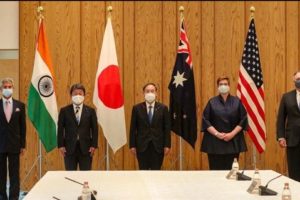 The foreign ministers of QUAD continued their discussions from the last ministerial level meeting in 2019, on 6 October, 2020. While there was no joint statement released, all countries issued individual readouts. As per the issue readout by India, the discussion called for a coordinated response to the challenges including financial problems emanating from the pandemic, best practices to combat Covid-19, increasing the resilience of supply chains, and enhancing access to affordable vaccines, medicines and medical equipment. There was also a focus on maintaining stability in the Indo-Pacific region amidst growing tensions. Australian media release mentions “We emphasised that, especially during a pandemic, it was vital that states work to ease tensions and avoid exacerbating long-standing disputes, work to counter disinformation, and refrain from malicious cyberspace activity. Ministers reiterated that states cannot assert maritime claims that are inconsistent with international law, particularly the United Nations Convention on the Law of the Sea (UNCLOS).”
The foreign ministers of QUAD continued their discussions from the last ministerial level meeting in 2019, on 6 October, 2020. While there was no joint statement released, all countries issued individual readouts. As per the issue readout by India, the discussion called for a coordinated response to the challenges including financial problems emanating from the pandemic, best practices to combat Covid-19, increasing the resilience of supply chains, and enhancing access to affordable vaccines, medicines and medical equipment. There was also a focus on maintaining stability in the Indo-Pacific region amidst growing tensions. Australian media release mentions “We emphasised that, especially during a pandemic, it was vital that states work to ease tensions and avoid exacerbating long-standing disputes, work to counter disinformation, and refrain from malicious cyberspace activity. Ministers reiterated that states cannot assert maritime claims that are inconsistent with international law, particularly the United Nations Convention on the Law of the Sea (UNCLOS).”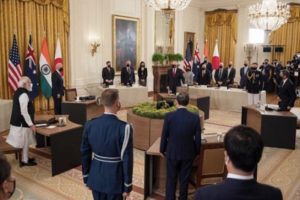 On September 24, President Biden hosted Prime Minister Scott Morrison of Australia, Prime Minister Narendra Modi of India, and Prime Minister Yoshihide Suga of Japan at the White House for the first-ever in-person Leaders’ Summit of the QUAD. The leaders released a Joint Statement which summarised their dialogue and future course of action. The regional security of the Indo-Pacific and strong confidence in the ASEAN remained on the focus along with response to the Pandemic.
On September 24, President Biden hosted Prime Minister Scott Morrison of Australia, Prime Minister Narendra Modi of India, and Prime Minister Yoshihide Suga of Japan at the White House for the first-ever in-person Leaders’ Summit of the QUAD. The leaders released a Joint Statement which summarised their dialogue and future course of action. The regional security of the Indo-Pacific and strong confidence in the ASEAN remained on the focus along with response to the Pandemic. 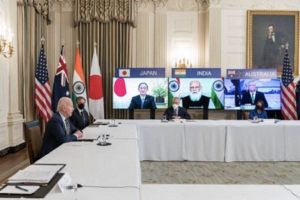 The QUAD Vaccine Partnership was announced at the first QUAD Summit on 12 March 2021 where QUAD countries agreed to deliver 1.2 billion vaccine doses globally. The aim was to expand and finance vaccine manufacturing and equipping the Indo-Pacific to build resilience against Covid-19. The launch of a senior-level QUAD Vaccine Experts Group, comprised of top scientists and officials from all QUAD member governments was also spearheaded.
The QUAD Vaccine Partnership was announced at the first QUAD Summit on 12 March 2021 where QUAD countries agreed to deliver 1.2 billion vaccine doses globally. The aim was to expand and finance vaccine manufacturing and equipping the Indo-Pacific to build resilience against Covid-19. The launch of a senior-level QUAD Vaccine Experts Group, comprised of top scientists and officials from all QUAD member governments was also spearheaded.  Although the Tsunami Core group had to be disbanded on fulfilment of its purpose, however the quadrilateral template that formed remained intact as a successful scaffolding of four countries, as stated by authors Patrick Gerard Buchan and Benjamin Rimland in their diplomatic brief about QUAD ( you can access the brief at
Although the Tsunami Core group had to be disbanded on fulfilment of its purpose, however the quadrilateral template that formed remained intact as a successful scaffolding of four countries, as stated by authors Patrick Gerard Buchan and Benjamin Rimland in their diplomatic brief about QUAD ( you can access the brief at  Secretary of State Colin Powell stated that the Core Tsunami Group was to be disbanded and folded and clubbed with the broader United Nations led Relief Operations. In a Tsunami Relief Conference in Jakarta, Secretary Powell stated that
Secretary of State Colin Powell stated that the Core Tsunami Group was to be disbanded and folded and clubbed with the broader United Nations led Relief Operations. In a Tsunami Relief Conference in Jakarta, Secretary Powell stated that 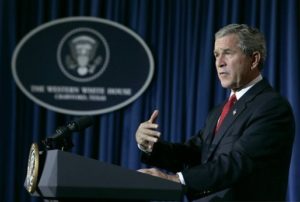 Soon after the Earthquake and Tsunami crisis, humanitarian reliefs by countries, viz., US, India, Japan, and Australia started to help the 13 havoc-stricken countries. The US initially promised $ 35 Millions in aid. However, on 29
Soon after the Earthquake and Tsunami crisis, humanitarian reliefs by countries, viz., US, India, Japan, and Australia started to help the 13 havoc-stricken countries. The US initially promised $ 35 Millions in aid. However, on 29 At 7:59AM local time, an earthquake of 9.1 magnitude (undersea) hit the coast of Sumatra, an Indonesian island. As a result of the same, massive waves of Tsunami triggered by the earthquake wreaked havoc for 7 hours across the Indian Ocean and to the coastal areas as far away as East Africa. The infamous Tsunami killed around 225,000 people, with people reporting the height of waves to be as high as 9 metres, i.e., 30 feet. Indonesia, Srilanka, India, Maldives, Thailand sustained horrendously massive damage, with the death toll exceeding 200,000 in Northern Sumatra’s Ache province alone. A great many people, i.e., around tens of thousands were found dead or missing in Srilanka and India, mostly from Andaman and Nicobar Islands of Indian territory. Maldives, being a low-lying country, also reported casualties in hundreds and more, with several non-Asian tourists reported dead or missing who were vacationing. Lack of food, water, medicines burgeoned the numbers of casualties, with the relief workers finding it difficult to reach the remotest areas where roads were destroyed or civil war raged. Long-term environmental damage ensued too, as both natural and man-made resources got demolished and diminished.
At 7:59AM local time, an earthquake of 9.1 magnitude (undersea) hit the coast of Sumatra, an Indonesian island. As a result of the same, massive waves of Tsunami triggered by the earthquake wreaked havoc for 7 hours across the Indian Ocean and to the coastal areas as far away as East Africa. The infamous Tsunami killed around 225,000 people, with people reporting the height of waves to be as high as 9 metres, i.e., 30 feet. Indonesia, Srilanka, India, Maldives, Thailand sustained horrendously massive damage, with the death toll exceeding 200,000 in Northern Sumatra’s Ache province alone. A great many people, i.e., around tens of thousands were found dead or missing in Srilanka and India, mostly from Andaman and Nicobar Islands of Indian territory. Maldives, being a low-lying country, also reported casualties in hundreds and more, with several non-Asian tourists reported dead or missing who were vacationing. Lack of food, water, medicines burgeoned the numbers of casualties, with the relief workers finding it difficult to reach the remotest areas where roads were destroyed or civil war raged. Long-term environmental damage ensued too, as both natural and man-made resources got demolished and diminished.
No responses yet